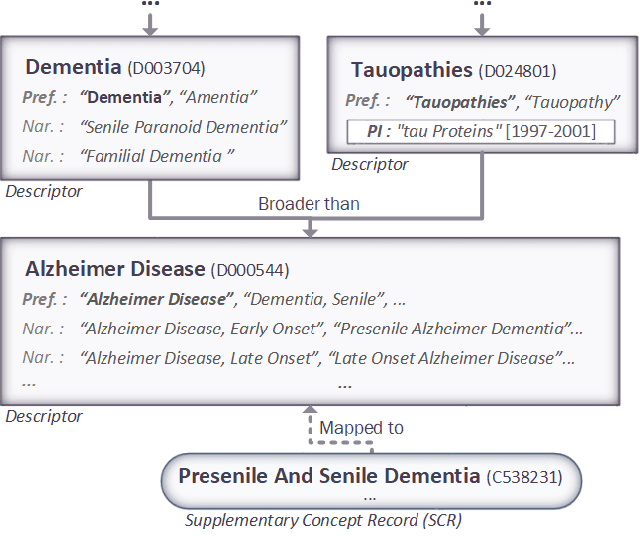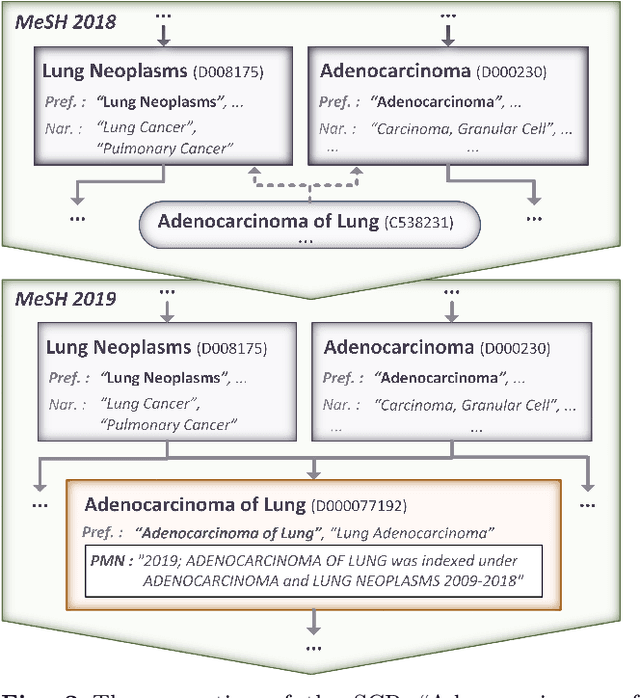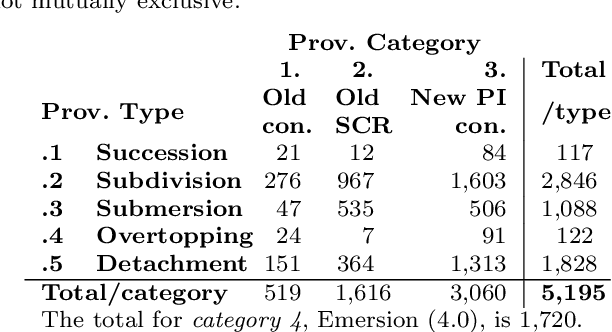What is all this new MeSH about? Exploring the semantic provenance of new descriptors in the MeSH thesaurus
Paper and Code
Jan 20, 2021



The Medical Subject Headings (MeSH) thesaurus is a controlled vocabulary widely used in biomedical knowledge systems, particularly for semantic indexing of scientific literature. As the MeSH hierarchy evolves through annual version updates, some new descriptors are introduced that were not previously available. This paper explores the conceptual provenance of these new descriptors. In particular, we investigate whether such new descriptors have been previously covered by older descriptors and what is their current relation to them. To this end, we propose a framework to categorize new descriptors based on their current relation to older descriptors. Based on the proposed classification scheme, we quantify, analyse and present the different types of new descriptors introduced in MeSH during the last fifteen years. The results show that only about 25% of new MeSH descriptors correspond to new emerging concepts, whereas the rest were previously covered by one or more existing descriptors, either implicitly or explicitly. Most of them were covered by a single existing descriptor and they usually end up as descendants of it in the current hierarchy, gradually leading towards a more fine-grained MeSH vocabulary. These insights about the dynamics of the thesaurus are useful for the retrospective study of scientific articles annotated with MeSH, but could also be used to inform the policy of updating the thesaurus in the future.
 Add to Chrome
Add to Chrome Add to Firefox
Add to Firefox Add to Edge
Add to Edge